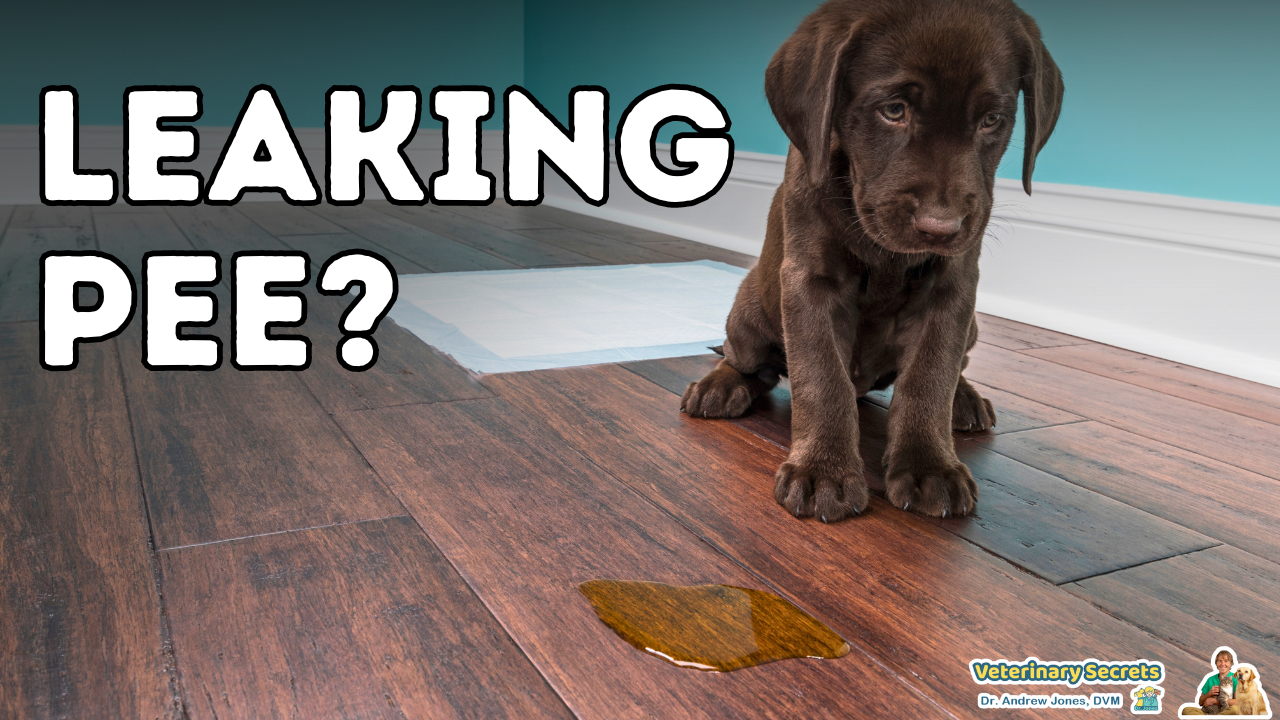Urinary Incontinence in Pets: A Common Issue

Leaking urine (incontinence) is actually very common.
There are many ways to naturally help dogs, but a newish remedy involves an amino acid found in Green Tea (L-Theanine).
It just so happens that our new Calming Chews contain high doses of L-Theanine, so they may help!
You can get your bottle here:


Understanding Bladder Control in Pets
Signs of incontinence include waking up to a puddle of urine or dribbling urine while walking. It’s common in middle-aged, spayed female dogs due to a loss of estrogen needed for bladder control. Other causes include bladder infections, spinal cord damage, and kidney failure.
Before concluding it’s incontinence, rule out a bladder infection or submissive urination. Incontinence often occurs at night when your pet is relaxed or sleeping.
Solutions for Pet Incontinence
- Night Water Restrictions: Limit water at night but ensure free access during the day.
- Supplements: Glandular supplements can help produce natural estrogen. Female Caps (Solaray) is one option.
- Plant Estrogen: Ground flaxseed and soy isoflavones can provide plant estrogens.
- Nervy: Address back injuries that may pressure bladder-controlling nerves.
- Acupressure: Points like BL1, BL13, BL14, BL15, BL67, SP6, and SP10 can help control the bladder and adrenal glands.
- Herbal Therapy: Oat straw, plantain, nettle, and horsetail can replace lost estrogens.
New Natural Remedies: Corn Silk and L-theanine
Corn silk can soothe bladder irritation and function as a diuretic. L-theanine, as per a recent study, may protect bladder function by suppressing chronic sympathetic hyperactivity.
Final Thoughts
If your dog has incontinence, consider trying these alternatives. Traditional veterinary treatments like estrogen Stilbestrol can have undesirable side effects.
P.P.S. If you have a dog with incontinence, then I encourage you to try a few of the alternatives… the veterinary treatments (ie estrogen Stilbestrol) can have side effects that are best avoided.
An easy way to help your dog with stress, anxiety and possibly incontinence:

Thank you. But tonight I found a small stone she must have passed. And she is dribbling. She does have a UTI. And out her on amoxicillin. I do have your calming chews will give her one tonight. Any advice would be so appreciated
Here’s a helpful article:
What is chanca piedra?
Chanca piedra is an herb that grows in tropical areas, like the rainforests of South America. Its scientific name isPhyllanthus niruri.
It also goes by a number of other names, such as:
* stone breaker
Kidney stones
Chanca piedra is best known as a potential kidney stone cure — which is how it earned the name “stone breaker.”
The herb is alkaline, so it may help prevent acidic kidney stones. It’s a less expensive, over-the-counter alternative to prescription potassium citrate, an alkalizing agent that’s commonly used to prevent acidic kidney stones. It may also help you urinate more.
In one study in 56 people with kidney stones who took 4.5 grams of chanca piedra per day, researchers found that the kidney stones decreased in size and number in about two-thirds of participants.
What’s more, other small human studies have observed some benefit to taking chanca piedra for kidney stones.
Dogs/Cats and Calcium Oxalate Stones
This is a less common bladder stone that is very difficult to treat- (far most common is struvite).
Calcium oxalates form when the urine pH is too low- although making the urine pH low helps dissolve struvite… (see the problem…)
* One of the principles in treatment is providing less building blocks for the stones (ie oxalates), increasing fluid, and slightly raising the urine pH
* AVOID feeding Spinach, Soy and Potatoes as they are HIGH in Oxalates
* Canned Food, Home diets to INCREASE fluid consumption
* Slight rise in urine pH- veterinary wise we would prescribe Sodium citrate- but it seems a safer, potentially more helpful option is this plant
‘Chanca Piedra’
It has been fairly widely used, and few side effects are noted.
A suggested dog/cat dose is 100mg/10lbs daily.